Learn About The IASTM Technique
Dr. Rob Chiropractic Pensacola
Do you know what the IASTM (Instrument Assisted Soft Tissue Mobilization) technique is? If you’re curious about it, or a health professional mentioned it and you aren’t sure what it is, then keep reading to learn not only what it is and what it might do for you.
If you’re currently suffering from an illness or an injury, then you might stand to take advantage of chiropractic work which helps you not only move around better, but also feel better. Your chiropractor can assess your current status and condition before using a variety of techniques and treatments as components of your treatment regimen. One particular treatment is the combination of myofascial release and massage of tissues. There are a variety of kinds of massage techniques that healers might use, but one of them is known as IASTM (instrument-assisted soft tissue mobilization) technique.
This kind of technique is sometimes called the Graston technique. Whatever it’s called at the time, it’s a specialized technique using massage and myofascial release. It’s rather new as a treatment, and it usually involves plastic or metal tools used to improve the soft tissue mobility of your body. These are ergonomically shaped tools which a trained health professional, such as a chiropractor or physical therapist, might use to mobilize your tendons, muscles, and fascia. If you’re not sure what fascia is, it’s the collagen that covers your muscles.
All in all, the technique is supposed to improve movement and reduce your pain. Specific benefits should include the elimination of restrictions that occur in the tight fascia, improved flexibility, improved soft tissue mobility, less pain, fewer muscle spasms, and an increase in circulation of blood flow to various tissues.
IASTM (instrument-assisted soft tissue mobilization) technique differs from conventional massage techniques in that massage work usually involves skin-to-skin contact as the healer’s hands are their tools. On the other hand, in IASTM treatment, plastic or metal tools are used, as they are scraped or rubbed over the patient’s skin, anywhere from gently to vigorously. This is done to locate and then release tightness that is found in craggy or crumbly areas in the fascial system, which is the collagen that covers your muscles kind of like a sausage.
It should be noted that not all patients are candidates for IASTM treatments. Your health professional can ascertain whether or not you have particular impairments that might benefit from this kind of treatment. These impairments might include limited mobility, loss of range of motion, excessive formation of scar tissue, decreased muscle recruitment, and pain with motion. If you have one or more of these particular impairments, then your health professional might consider incorporating IASTM treatments.
There are other specific conditions that might also stand to benefit from IASTM techniques being applied. They include but are not limited to tendonitis, tendinopathy, plantar fasciitis, myofascial pain, musculoskeletal imbalance, scar tissue as a result of trauma or surgery, and ligament sprains.
If you get this work yourself, your professional will always start things off gently, exploring for places that need work. You’ll feel these gentle scraping sensations. Things can get mildly uncomfortable as these tools pass over your skin. If it gets to a point that you can’t tolerate the level of discomfort, you do need to communicate this.
Never continue to work with a professional who insists on continuing this treatment after you have asked them to slow down, go easier, or even stop. It’s your body, and the treatment is always your choice.
You’ll likely wind up with red skin in the affected area. There might even be some slight bruising if the motions got vigorous. It’s also likely that your therapist will have you do some active stretches or motions to help improve your mobility. That can keep scar tissue from reforming, as well as prevent fascia restrictions.
IASTM therapy does come with a combination of benefits and risks. Potential benefits include decreased pain, decreased the formation of scar tissue, enhanced cellular activity around the injury site, a better range of motion, and improved tissue extensibility.
While these all sound well and good, remember that this is still a relatively new technique, so your own results may vary. Also be mindful of the possible risks, which include redness of any skin where treatment takes place, potential bruising, pain getting worse instead of better, and a failure to actually get any relief.
As with most chiropractic or physical therapy matters, how well or not the IASTM technique might work for you can just come down to how good a pair of healing hands you are in. Dr. Rob Thomson of Dr. Rob Chiropractic based in Pensacola, Florida is a reputable, reliable, and effective chiropractic professional you can trust your care to. To find out whether or not you’re a candidate for the IASTM technique or not, call to schedule a consultation today.
